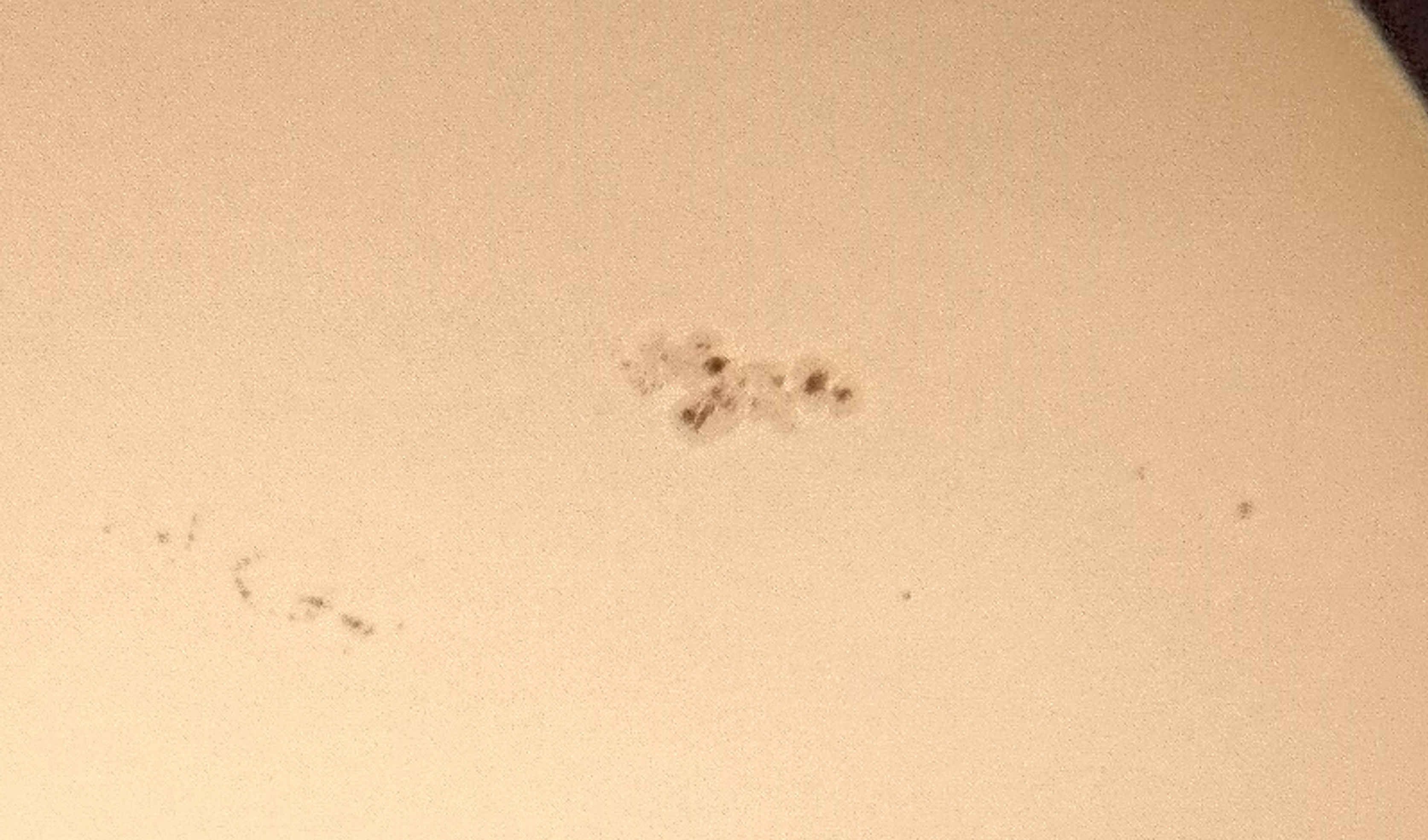NOAA 3014 dominated the solar surface during the past week, with - according to the NOAA/SWPC data - its sunspot area about 7 times that of the Earth's surface. This makes it the largest sunspot group of solar cycle 25 (SC25) so far. Underneath a picture of this big and complex sunspot group and its surroundings taken in white light using a 20cm telescope on 22 May. The clip shows the evolution of the sunspot region from 16 till 22 May, as observed by SDO/HMI.


The region was also magnetically very complex, with an important delta structure present from 18 May onwards. A sunspot group is said to have a delta structure when it contains at least one mature spot in which umbrae of opposite magnetic polarities are separated by less than 2 degrees and situated within the common penumbra. This is shown in the comparison images underneath, with a white light image on the left and a magnetogram on the right as taken by the SDO/HMI istrument. White indicates magnetic field lines leaving the Sun ("positive polarity"), black indicates magnetic field lines returning to the Sun ("negative polarity"). The line separating these areas of opposite polarity magnetic fields is called the "neutral line" or also the "magnetic polarity inversion line" (PIL).

During its transit, the general outlook of NOAA 3014 reminded some observers of another sunspot group that was visible in January 2005 (SC23). Though similar in overall outlook, NOAA 0720 was slightly larger than NOAA 3014, its area at about 9 times that of the Earth's surface. More importantly, it had a much more complex magnetic structure, with one single huge penumbra containing several spots of opposite magnetic polarity and with the neutral line cutting the group almost in half. It basically looked like one huge delta structure, as can be seen from the SOHO/MDI imagery underneath covering 11-18 January 2005. Correcting for the GOES scaling factor, this region produced 25 M-class flares and 7 X-class events, the strongest an X10.1 flare on 20 January 2005. This eruption was associated with a moderate proton event, however the greater than 100 MeV proton flux peaked at 652 pfu, a value that had not been observed since October 1989 (680 pfu). It resulted in GLE 69, one of the more outstanding Ground Level Enhancements of the last few decades (see the Oulu webpage). Despite its prominent delta structure, NOAA 3014 produced only 4 low-level M-class flares so far, thus remaining quite under the expectations for such a large and complex sunspot group.

In the past, several research groups have examined the underlying causes of flare production by sunspot groups, such as Al-Ghraibah et al. (2015) and Nishizuka et al. (2017). In the former study, magnetic gradients showed the best forecasting ability, whereas in the latter study, from amongst 60 (!) potentially contributing parameters, it was found that preceding flare activity by the group was most effective, followed by the length of the magnetic neutral lines, the unsigned magnetic flux, and the area of ultraviolet brightening, all of which are strongly correlated with the flux emergence dynamics in an active region. With still so many potentially contributing parameters, the solar flare forecaster's life has not gotten any easier. The imagery underneath shows the Sun in extreme ultraviolet on 19 and 20 May as observed by SDO/AIA 094, during which NOAA 3017 produced an M5 flare (first bright flash in the clip), and NOAA 3014 3 M-class flares. This image shows the M3 eruption in NOAA 3014 on 20 May at 07:44UT.






